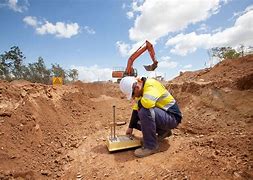Services
Lorem Ipsum is simply text of the stry simply dummy text of the printing and typesetting industry.

Civil Material Testing
Home Civil Material Testing. FIELD SAMPLING. This includes taking samples of aggregate from stock piles, of fresh concrete, tack coat and hot asphalt, soils and building blocks. Cores are cut from asphalt for routine QC, while from concrete for determinations of strength or chloride, sulphate and carbonations.
Liquid Limit
|
Plastic Limit |
Heavy Compaction MDD/OMC |
Light Compaction MDD/OMC |
Water content |
Free Swell Index |
Specific gravity-Fine Grained Soil |
Grain size Analysis (By Sieve) |
California Bearing Ratio (C.B.R.) |
Direct Shear Test |
Specific gravity-Coarse Grain Soil |
Triaxial (UU)- Angle of Friction |
Triaxial (UU)- Cohesion C |
Determination Of Dry Density Of Soil In Place By Core-Cutter Method |
Determination Of Dry Density Of Soil In Place By Sand Replacement Method |
Specific Gravity(Apparent) |
Water Absorption |
Compressive Strength |
Water Absorption |
Compressive Strength |
Binder Content |
Specific Gravity |
Softening Point |
Penetration (Div. – 1/10 mm) |
Ductility |
Kinematics Viscosity |
Absolute Viscosity |
Bulk Density |
Water Absorption |
Compressive Strength |
Efflorescence |
Dimension |
Standard Consistency |
Compressive Strength |
Soundness By Le-Chatelier |
Fineness By Blaine |
Initial Setting Time
|
Final Setting time |
Initial Setting Time |
Final Setting Time |
Fineness By Blain Air |
Soundness By Le- Chatelier |
Particles retained on 45 micron sieve |
Mass per meter |
Ultimate Tensile Strength |
Yield Stress |
Elongation |
Soil Investigation
Soil investigation must be undertaken to determine the bearing capacity of the soil, its settlement rate and the position of the water table. One of the easiest methods is to dig trial pits and visual inspections carried out then samples with minimum disturbance are collected for subsequent laboratory testing.


NDT
Non-destructive testing (NDT) is a testing and analysis technique used by industry to evaluate the properties of a material, component, structure or system for characteristic differences or welding defects and discontinuities without causing damage to the original part.
Surveying
A branch of applied mathematics that is concerned with determining the area of any portion of the earth's surface, the lengths and directions of the bounding lines, and the contour of the surface and with accurately delineating the whole on paper.

Planning And Structure Design
Planning is a process that involves making a preliminary sketch of something, including all details, estimating the expenses required for it and finally carrying it out Structures can be considered as systems which may be made up of many components. Each component will be designed to meet the demands caused by its own weight, plus any other external loads such as wind, snow or earthquake forces..

Third Party Inspection
The inspection of Civil works is a periodic inspection conducted through a team of qualified and experienced engineers, who are called Third Party Inspectors (TPI) to ensure the quality of Civil works.
Generally, the buyers hire the service provider of Third-Party Inspection for Inspection of the products to verify that meets the quality / specification parameters as required. The TPI service provider also ensures that the manufacturers or supplier of products follow all the processes that meet the standards specification requirements in terms of the quality, Fitment, Performance or any other technical specification requirements including marking, packing etc. Apart from being independent, the Third-Party Inspection service providers need to be qualified and they must have the ability to conduct the whole inspection process impartially

